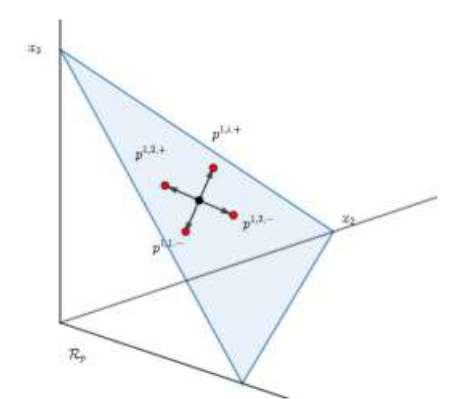Métodos de puto interior – un nuevo método de punto interior
DOI:
https://doi.org/10.22517/23447214.25167Keywords:
Método de punto interior, Programación Lineal, Vectores Ortonormales, NúcleoAbstract
This work proposes a new interior point method in order to solve linear programming problems. By using orthonormal vectors in Rn , directions may be built to find the optimal solution of the problem. The method presented here will be built looking for these vectors in order to generate directions of movement and thus define a search path toward solving the problem. The tools used for the construction of this new method are basic concepts of linear algebra, this allows a pedagogical easiness when it comes to understand the algorithm.
Downloads

Downloads
-
Vistas(Views): 457
- PDF (Español (España)) Descargas(Downloads): 219
- HTML (Español (España)) Descargas(Downloads): 7
Published
How to Cite
Issue
Section
License
Copyright (c) 2023 Scientia et Technica

This work is licensed under a Creative Commons Attribution-NonCommercial-ShareAlike 4.0 International License.
Copyrights
The journal is free open access. The papers are published under the Creative Commons Attribution / Attribution-NonCommercial-NoDerivatives 4.0 International - CC BY-NC-ND 4.0 license. For this reason, the author or authors of a manuscript accepted for publication will yield all the economic rights to the Universidad Tecnológica of Pereira free of charge, taking into account the following:
In the event that the submitted manuscript is accepted for publication, the authors must grant permission to the journal, in unlimited time, to reproduce, to edit, distribute, exhibit and publish anywhere, either by means printed, electronic, databases, repositories, optical discs, Internet or any other required medium. In all cases, the journal preserves the obligation to respect, the moral rights of the authors, contained in article 30 of Law 23 of 1982 of the Government Colombian.
The transferors using ASSIGNMENT OF PATRIMONIAL RIGHTS letter declare that all the material that is part of the article is entirely free of copyright. Therefore, the authors are responsible for any litigation or related claim to intellectual property rights. They exonerate of all responsibility to the Universidad Tecnológica of Pereira (publishing entity) and the Scientia et Technica journal. Likewise, the authors accept that the work presented will be distributed in free open access, safeguarding copyright under the Creative Commons Attribution / Recognition-NonCommercial-NoDerivatives 4.0 International - https://creativecommons.org/licenses/by-nc-nd/4.0/deed.es license.


